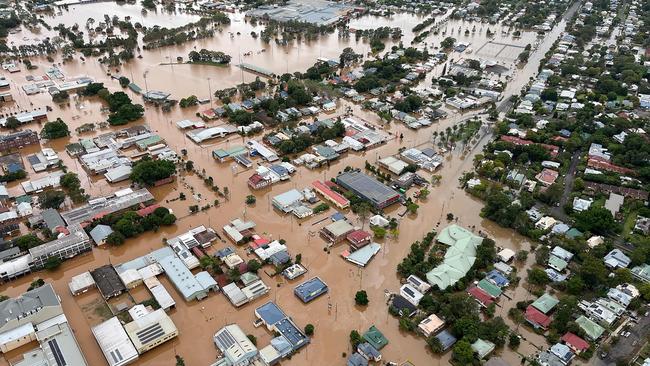
The flooding disasters that have struck Queensland and NSW this year have shone a spotlight on one area where we know there is clear room for improvement: simplifying the mess of state and federal disaster recovery funding. Indeed, one of the most unedifying spectacles of the flood response in Queensland and NSW was the public state-federal haggling over who was funding what, where and on what basis.
The national Disaster Recovery Funding Arrangements provide for joint state and federal funding of recovery programs. States are generally responsible for stumping the upfront cost of these programs, with the federal government reimbursing its share after the fact.
The problem is, while states are at the front line of response and recovery, and can tailor support to meet the urgent needs of the people affected, they can be guaranteed the federal government will reimburse a share of the cost only if the proposed programs meet certain federal regulatory and legislative criteria.
And because every state has different circumstances, with unique needs – and every natural disaster is different – it is rarely clear that a particular program, tailored to a specific affected community, will meet the criteria and be approved by the federal government for joint funding.
This uncertainty acts as a handbrake on the speed of the response because it means while people’s hopes and homes are sinking, with every new disaster state and federal politicians and bureaucrats have to engage in long and technical negotiations about how much funding can be allocated to which programs, whether they meet the relevant requirements and what bureaucratic steps must be taken before money can start flowing.
The only alternative to negotiation is for the states to go it alone and shoulder the entirety of the risk and the cost at the expense of their own fiscal security.
This is bureaucratic duplication at its worst, and for people waiting for help the redundant red-tape ritual is insulting and infuriating. Yet it is baked into the system, so the only solution is to redesign the system in a way that gets help to people faster.
Following the 2020 Black Summer bushfires, that’s exactly what the Council of Australian Governments agreed to do. But due to Covid-19 (and the subsequent demise of COAG), the results were never implemented.
Well, the time has come to finish the job. We all agree joint state and federal funding of disaster recovery should continue, but we must have a system that is faster and more flexible, capable of delivering rapid-response funding tailored to the needs of the communities affected. We must revisit the 2020 review and bring an end to the haggling, the politics and the delays that hold back help for disaster-stricken communities.
But this is simply one area in which we as a group of elected leaders can show leadership. This week, in addition to tackling how to respond to the biblical-level disasters our country faces, the Council for the Australian Federation (the meeting of state and territory first ministers, which NSW chairs) had the function of federation as a whole at front of mind. First ministers agree that when there’s friction in the federation it can’t function properly.
This is why, in addition to agreeing to review the DRFA, states and territories will also review the federation, including the operation of national cabinet, which replaced COAG.
Federating this great country took years of intense debate, culminating in the establishment of one of the greatest and most stable democracies in the world.
But it’s not a set-and-forget system. The world has changed profoundly since 1901, and while our core moral and legal values remain sound, the system can be better. States are no longer grappling with how to make sure train tracks are the same size on each side of the borders or who will charge what tax on a paddle steamer, but we are faced with ensuring the safety and prosperity of millions – Covid-19 being the ultimate example.
Reviewing federation and the architecture we rely on to make decisions is about modernising executive government relationships to match the needs and expectations of all our citizens – and the states and territories are proud to lead the charge.
Dominic Perrottet is the Premier of NSW.




If the past two years have taught us anything, it’s that state and federal relationships must improve. This isn’t about what side of politics you’re from, this is about the federation working for everyone. This week, a meeting of state and territory leaders discussed just this – how can we make the system stronger, clearer and fairer.